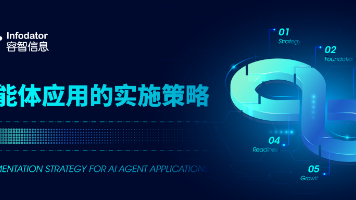Android开发必备:三大核心布局详解
本文介绍了Android开发中五种常用布局的特点和使用场景:1. LinearLayout(线性布局):通过orientation属性控制控件水平或垂直排列,支持权重分配,适合简单线性排列和比例分配场景。2. RelativeLayout(相对布局):通过相对位置定位控件,灵活性高,适合复杂布局和明确相对关系的界面设计。3. ConstraintLayout(约束布局):官方推荐的现代布局方式,通
目录
2. 子控件的重要属性(layout_ 开头,作用于子控件)
2. 常用属性(子控件的 layout_constraintXXX 属性)
在 Android 开发中,布局(Layout) 是用于定义界面结构的 XML 文件(或代码),决定了控件(如按钮、文本框)的位置、大小和排列方式。对于初学者,掌握以下几种常用布局能快速搭建基础界面:
一、LinearLayout(线性布局)
核心特点:控件按水平(horizontal) 或垂直(vertical) 方向线性排列,是最基础、最常用的布局之一。
1. 基本属性
-
android:orientation:排列方向(必选)vertical:垂直排列(从上到下)horizontal:水平排列(从左到右)
-
android:gravity:控制子控件在当前布局中的对齐方式(如居中、靠左)可选值:center(居中)、left(左对齐)、right(右对齐)、top(上对齐)、bottom(下对齐),可组合使用(如center_vertical|center_horizontal)。 -
android:layout_width/android:layout_height:布局自身的宽高(所有布局和控件都有)match_parent:与父容器同宽 / 高wrap_content:根据内容自适应宽 / 高- 具体数值(如
100dp,推荐用dp单位适配不同屏幕)。
2. 子控件的重要属性(layout_ 开头,作用于子控件)
android:layout_gravity:子控件相对于父布局的对齐方式(仅在 LinearLayout 中有效,与gravity区分)。android:layout_weight:权重,用于分配父布局的剩余空间(核心功能)。
3. 示例:垂直排列 + 权重分配
<!-- res/layout/activity_linear.xml -->
<LinearLayout xmlns:android="http://schemas.android.com/apk/res/android"
android:layout_width="match_parent"
android:layout_height="match_parent"
android:orientation="vertical" <!-- 垂直排列 -->
android:gravity="center_horizontal"> <!-- 子控件水平居中 -->
<!-- 按钮1:高度自适应,宽度匹配父布局 -->
<Button
android:layout_width="match_parent"
android:layout_height="wrap_content"
android:text="按钮1"/>
<!-- 按钮2:占剩余空间的1/3 -->
<Button
android:layout_width="match_parent"
android:layout_height="0dp" <!-- 权重分配时,高度设为0dp -->
android:layout_weight="1" <!-- 权重1 -->
android:text="按钮2"/>
<!-- 按钮3:占剩余空间的2/3 -->
<Button
android:layout_width="match_parent"
android:layout_height="0dp"
android:layout_weight="2" <!-- 权重2 -->
android:text="按钮3"/>
</LinearLayout>
效果:按钮 1 在顶部(高度自适应),按钮 2 和按钮 3 平分剩余高度(比例 1:2)。
4. 适用场景
- 简单的线性排列(如垂直的登录表单、水平的导航栏)。
- 需要按比例分配空间的场景(如底部按钮栏平分宽度)。
二、RelativeLayout(相对布局)
核心特点:控件通过相对位置(相对于父布局或其他控件)定位,灵活性高,适合复杂布局。
1. 常用属性(子控件的 layout_ 属性)
-
相对于父布局:
layout_alignParentTop="true":与父布局顶部对齐layout_alignParentBottom="true":与父布局底部对齐layout_alignParentLeft="true":与父布局左对齐layout_alignParentRight="true":与父布局右对齐layout_centerInParent="true":在父布局中心
-
相对于其他控件(需先给目标控件设置
id):layout_above="@id/btn1":在 btn1 上方layout_below="@id/btn1":在 btn1 下方layout_toLeftOf="@id/btn1":在 btn1 左侧layout_toRightOf="@id/btn1":在 btn1 右侧layout_alignTop="@id/btn1":与 btn1 顶部对齐
2. 示例:相对位置排列
<!-- res/layout/activity_relative.xml -->
<RelativeLayout xmlns:android="http://schemas.android.com/apk/res/android"
android:layout_width="match_parent"
android:layout_height="match_parent">
<!-- 中心按钮 -->
<Button
android:id="@+id/btn_center" <!-- 定义id,供其他控件参考 -->
android:layout_width="wrap_content"
android:layout_height="wrap_content"
android:layout_centerInParent="true"
android:text="中心按钮"/>
<!-- 在中心按钮上方 -->
<Button
android:layout_width="wrap_content"
android:layout_height="wrap_content"
android:layout_above="@id/btn_center" <!-- 相对于中心按钮 -->
android:layout_alignLeft="@id/btn_center" <!-- 与中心按钮左对齐 -->
android:text="上方按钮"/>
<!-- 在中心按钮右侧 -->
<Button
android:layout_width="wrap_content"
android:layout_height="wrap_content"
android:layout_toRightOf="@id/btn_center" <!-- 相对于中心按钮 -->
android:layout_alignTop="@id/btn_center" <!-- 与中心按钮顶部对齐 -->
android:text="右侧按钮"/>
</RelativeLayout>
效果:中心按钮在屏幕中间,上方按钮在其正上方,右侧按钮在其正右方。
3. 适用场景
- 控件位置有明确相对关系的场景(如 “确定” 按钮在 “取消” 按钮右侧)。
- 复杂布局(避免 LinearLayout 过度嵌套导致性能问题)。
三、ConstraintLayout(约束布局)
核心特点:Android 官方推荐的布局(Android Studio 默认布局),通过约束关系定位控件,功能强大,可替代 LinearLayout 和 RelativeLayout,且能减少布局嵌套,提升性能。
1. 核心概念:约束(Constraint)
每个控件需要设置水平约束(左 / 右)和垂直约束(上 / 下),否则会默认显示在左上角。约束可以是相对于父布局、其他控件、辅助线(Guideline)等。
2. 常用属性(子控件的 layout_constraintXXX 属性)
-
水平约束:
layout_constraintLeft_toLeftOf:左边缘与目标左边缘对齐(如parent表示父布局)layout_constraintLeft_toRightOf:左边缘与目标右边缘对齐layout_constraintRight_toLeftOf:右边缘与目标左边缘对齐layout_constraintRight_toRightOf:右边缘与目标右边缘对齐
-
垂直约束:
layout_constraintTop_toTopOf:上边缘与目标上边缘对齐layout_constraintTop_toBottomOf:上边缘与目标下边缘对齐layout_constraintBottom_toTopOf:下边缘与目标上边缘对齐layout_constraintBottom_toBottomOf:下边缘与目标下边缘对齐
-
居中对齐:
- 水平居中:
layout_constraintLeft_toLeftOf="parent"+layout_constraintRight_toRightOf="parent" - 垂直居中:
layout_constraintTop_toTopOf="parent"+layout_constraintBottom_toBottomOf="parent"
- 水平居中:
3. 示例:居中 + 相对位置
<!-- res/layout/activity_constraint.xml -->
<androidx.constraintlayout.widget.ConstraintLayout xmlns:android="http://schemas.android.com/apk/res/android"
xmlns:app="http://schemas.android.com/apk/res-auto" <!-- 约束布局需此命名空间 -->
android:layout_width="match_parent"
android:layout_height="match_parent">
<!-- 中心按钮 -->
<Button
android:id="@+id/btn_center"
android:layout_width="wrap_content"
android:layout_height="wrap_content"
android:text="中心按钮"
<!-- 水平居中:左右约束父布局 -->
app:layout_constraintLeft_toLeftOf="parent"
app:layout_constraintRight_toRightOf="parent"
<!-- 垂直居中:上下约束父布局 -->
app:layout_constraintTop_toTopOf="parent"
app:layout_constraintBottom_toBottomOf="parent"/>
<!-- 在中心按钮上方 -->
<Button
android:layout_width="wrap_content"
android:layout_height="wrap_content"
android:text="上方按钮"
<!-- 水平与中心按钮对齐 -->
app:layout_constraintLeft_toLeftOf="@id/btn_center"
app:layout_constraintRight_toRightOf="@id/btn_center"
<!-- 垂直约束:上边缘与中心按钮下边缘对齐(实际是上方,需调整) -->
app:layout_constraintBottom_toTopOf="@id/btn_center"/>
</androidx.constraintlayout.widget.ConstraintLayout>
效果:与 RelativeLayout 的示例类似,但通过约束实现,更灵活。
4. 进阶功能(适合复杂布局)
- Chain(链):多个控件水平 / 垂直连成链,可设置均匀分布、权重等(类似 LinearLayout 的 weight)。
- Guideline(辅助线):不可见的参考线,用于对齐控件(如 “距离顶部 20% 位置”)。
- 百分比布局:通过
layout_constraintWidth_percent等属性设置控件宽高为父布局的百分比。
5. 适用场景
- 几乎所有场景(官方推荐),尤其是复杂布局(减少嵌套)和响应式布局(适配不同屏幕)。
四、FrameLayout(帧布局)
核心特点:控件默认堆叠显示(都从左上角开始),后添加的控件会覆盖先添加的,适合简单的叠加场景。
1. 常用属性
- 子控件通过
layout_gravity控制在父布局中的位置(如居中、右下角)。
2. 示例:图片 + 文字叠加
<!-- res/layout/activity_frame.xml -->
<FrameLayout xmlns:android="http://schemas.android.com/apk/res/android"
android:layout_width="match_parent"
android:layout_height="match_parent">
<!-- 背景图片(占满屏幕) -->
<ImageView
android:layout_width="match_parent"
android:layout_height="match_parent"
android:src="@drawable/bg"
android:scaleType="centerCrop"/>
<!-- 文字(居中显示) -->
<TextView
android:layout_width="wrap_content"
android:layout_height="wrap_content"
android:layout_gravity="center" <!-- 居中 -->
android:text="Hello FrameLayout"
android:textColor="@color/white"
android:textSize="24sp"/>
</FrameLayout>
效果:文字叠加在背景图片的中心。
3. 适用场景
- 控件叠加显示(如图片上放文字、进度条覆盖在内容上)。
- 作为 Fragment 的容器(动态切换 Fragment 时,新 Fragment 覆盖旧的)。
五、ScrollView(滚动布局)
核心特点:当内容超过屏幕时,允许垂直滚动(水平滚动用 HorizontalScrollView),避免内容被截断。
1. 注意事项
- 只能有一个直接子元素(通常是 LinearLayout 或 ConstraintLayout,再在其中放多个控件)。
2. 示例:长文本滚动
<!-- res/layout/activity_scroll.xml -->
<ScrollView xmlns:android="http://schemas.android.com/apk/res/android"
android:layout_width="match_parent"
android:layout_height="match_parent">
<!-- 唯一直接子元素:垂直线性布局 -->
<LinearLayout
android:layout_width="match_parent"
android:layout_height="wrap_content"
android:orientation="vertical"
android:padding="16dp">
<!-- 多个文本框(内容过长) -->
<TextView
android:layout_width="match_parent"
android:layout_height="wrap_content"
android:text="很长的文本内容..."
android:textSize="18sp"/>
<!-- 更多控件... -->
</LinearLayout>
</ScrollView>
效果:内容超过屏幕时,可上下滚动查看全部。
3. 适用场景
- 内容过长的页面(如注册表单、详情页)。
总结:布局选择指南
| 布局类型 | 核心特点 | 适用场景 |
|---|---|---|
| LinearLayout | 线性排列,支持权重 | 简单垂直 / 水平排列、比例分配空间 |
| RelativeLayout | 相对位置定位 | 控件有明确相对关系的复杂布局 |
| ConstraintLayout | 约束关系定位,功能强大 | 几乎所有场景(推荐),尤其是复杂响应式布局 |
| FrameLayout | 控件堆叠显示 | 叠加效果、Fragment 容器 |
| ScrollView | 内容可滚动 | 内容过长的页面 |
初学者建议先掌握 LinearLayout 和 ConstraintLayout,其中 ConstraintLayout 是未来主流,建议重点学习。布局的核心是 “清晰、简洁、少嵌套”,避免过度复杂的布局结构影响性能。
更多推荐
 已为社区贡献1条内容
已为社区贡献1条内容







所有评论(0)